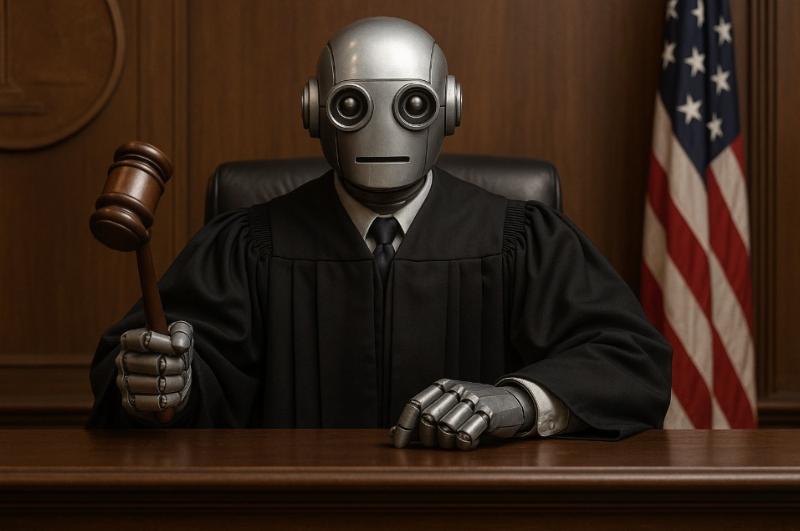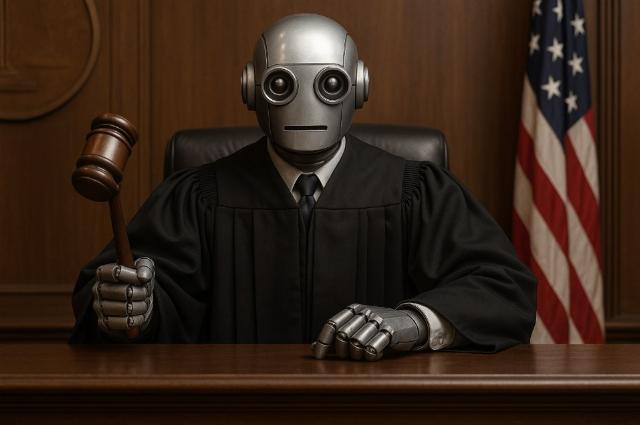


The British philosopher Alfred North Whitehead, co-author with Bertrand Russell of the monumental Principia Mathematica, once stated that the history of Western philosophy can be seen as a series of footnotes to Plato.
Whitehead was not exaggerating. In my forthcoming book, Echoes from Plato’s Cave (Jenny Stanford Publishing), I was able to illustrate his point with some two dozen examples from Aristotle all the way to Wittgenstein.
Here I want to explain how the problem of the criterion, usually associated with the third-century AD philosopher Sextus Empiricus, but was anticipated in a Platonic dialogue, the Meno, can help put the brakes on judicial rulings whose only purpose is to “get Trump.”

Image created using AI.
With typical brevity, Plato asks:
M1. Which actions in general have the property being virtuous, and which not?
M2. How do we decide if this specific action has the property being virtuous, or not?
The problem of the criterion is whether we can answer M1 without answering M2 and vice versa. Quite the conundrum, isn’t it?
Next, consider the following versions:
L1. Which judicial rulings in general have the property, being consistent with the Constitution, and which not?
L2. How do we decide if this specific ruling by judge X has the property being consistent with the Constitution, or not?
So, can we answer L1 without answering L2 and vice versa? Hmmm ...
Next, let’s ask whether “we” and “judge X” can be the same person in L2. A “yes” answer comes dangerously close to judicial tyranny, which is what we have when judges are out to “get Trump” by any means necessary.
However, let’s be careful. What matters is not whether “we” and “judge X” must be different persons but rather whether the method M used to decide whether this ruling by judge X has the property being consistent with the Constitution is such that any impartial observer using M correctly would issue the same ruling. Judges can be impartial observers.
Notice that in science—the real thing, not the Fauci, Ehrlich or Dr. Jill versions—the impartial observer criterion is an absolute requirement and has been since Archimedes.
“Come on, Arnold. Who’s to decide if observer #1 is impartial? You’ll need observer #2 for that decision, and then observer #3 and so on ad infinitum.”
Not really.
The problem is to devise a method for judging consistency with the Constitution impartially. One absolute bottom line is logical consistency, which a computer can decide. It’s a matter of putting in rules of inference along with instructions for applying them. Whitehead and Russell figured that out 100 years ago. Mathematics does it all the time, especially when proofs are complicated and would take too long “by hand.” Medicine uses computer-based methodology routinely to do diagnostics.
I’m suggesting using computer-based diagnostics for judging logical consistency with the Constitution. An “AI judge” would be impartial in a demonstrable way. Sure, precautions would need to be taken to avoid GIGO but we know how to do that in mathematics and medicine.
Judges who want to “go rogue” might well think twice knowing that an AI counterpart is looking over their shoulder. A chilling effect is a good outcome.
The question is whether rulings of AI judges should be binding. If the logic is right, yes. Whether legally binding is ultimately up to Mr. Justice John Roberts.
Arnold Cusmariu is a frequent contributor to American Thinker. He is the author of Logic for Kids, available at Amazon.
